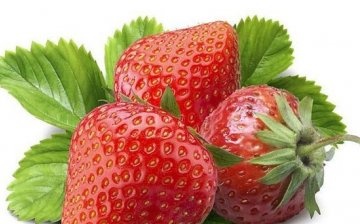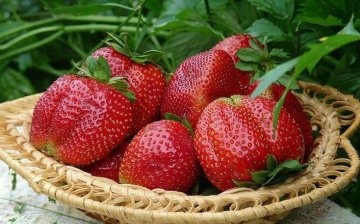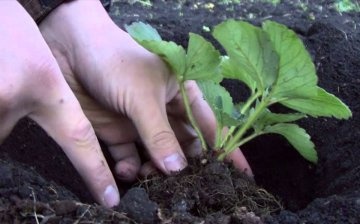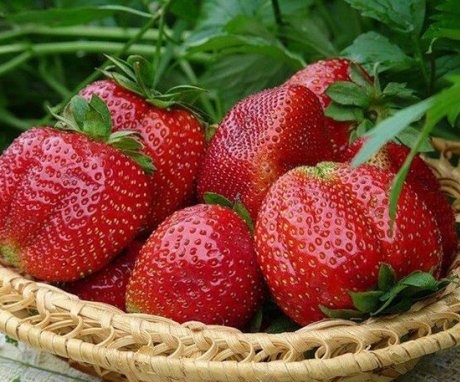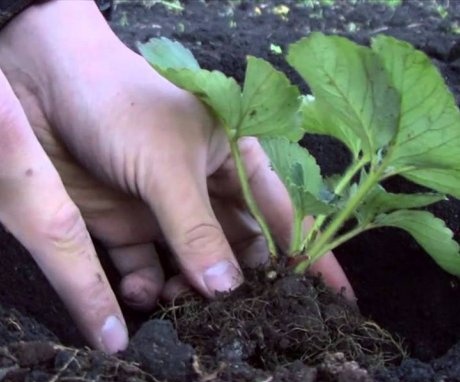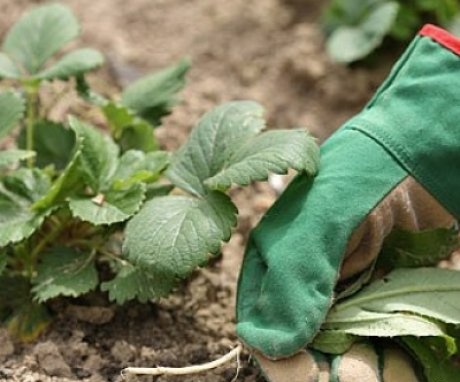Strawberry "Mashenka": cultivation technology
Among adults and children Strawberry is one of the most beloved berries. Its bright taste and unusual aroma ensure its popularity. A wide selection of varieties of this berry is presented to the gardener. The Mashenka variety has several important advantages that will interest anyone.
Content:
Description and benefits of the variety
Strawberry variety "Mashenka" is an early variety. It is distinguished by an average spreading of the bush, which, at the same time, has a rather powerful structure. On the site, it is placed compactly, allowing you to plan the site.
At the first harvest, the strawberries are impressive in size.
The berries can weigh 100 grams, which makes them one of the largest. The fruits are flattened. Subsequent harvests have a reduced weight, but still reaching 40 grams. It will be useful for a gardener to know several features of the Mashenka strawberry. So, these berries have a fairly high pulp density. This ensures long-term storage of ripe berries and the absence of the risk of suppressing the harvest. She steadfastly tolerates diseases, practically not being exposed to them.
When working with the variety, it should be remembered that it is sensitive to low temperatures, therefore, you should be aware of the risk of losing crops during frosts and control the temperature of the soil and ambient air.
Summing up the general result, let us highlight the following advantages of the Mashenka strawberry variety:
- Large strawberry fruit.
- Taste qualities.
- Harvest transportability.
- High density of berry pulp.
- Resistance to various diseases and many pests and parasites.
With minor flaws, this variety is one of the most popular among gardeners.
Reproduction and planting
Reproduction of the "Mashenka" variety is carried out using seed and a special mustache. The whisker selection period should be accurately determined on the eve of harvesting and sowing, because later whiskers make the bushes weaker. The soil is preliminarily abundantly fertilized with humus, after which peat or straw is introduced for mulching... The distance between the seedlings should be about half a meter.
The optimal reproduction method for obtaining a powerful bush is to plant seeds (although this process is more laborious, it is chosen more often):
- First, it is necessary to prepare special containers in which the selected soil with vermiculite and peat should be placed in equal shares. The proportions must be observed exactly.
- After sowing the seeds, the soil is moderately moistened and covered with foil. Ripening occurs at a moderate room temperature.
- The first strawberry sprouts should appear after 10 days. Remove the film and wait until the seedlings reach 10 cm and form 5 leaves. Only then can they be moved into open ground.
The Mashenka strawberries are planted in May and August. The variety reacts very sharply to low temperatures, so these months should be chosen. The size of the fruit is decreasing every year, but do not worry - this is the normal development of the variety, which stabilizes a little later on the average size.
Before planting, you should carefully prepare the soil: about 14 days before planting, you need to process the site pesticides for the destruction of pests.
Strawberries require a light soil to develop, which provides the root system with a sufficient volume of air.
50 cm is left between the rows of planting. strawberries on a cloudy day. The wells are watered with water. The soil around each bush is lightly tamped. Often, between the rows of strawberries, gardeners plant garlicthat gets along well with strawberries and contributes to pest control. With regular watering of the site, periodic weeding and loosening of the soil, it is possible to get an excellent crop yield.
Care Tips
Strawberry "Mashenka" is quite simple and unpretentious to care for. This is important for gardeners and allows you to get a good harvest with a small investment of time and money. The variety prefers leveled areas of soil, or those with a minimum slope. It is best to plant strawberries in areas directed to the southwest or west. The lowlands are unsuitable for strawberry crops. Also, do not sow strawberries on the southern slopes - the rapid melting of snow leaves strawberries unprotected against external influences.
With the onset of spring, strawberries should be additionally fed. Moreover, there is a certain bait schedule that ensures the best results:
- At the end of March it is necessary to make organic fertilizers... Also at this time they are fed with nitrogen mixtures.
- Phosphorus-potassium and complex fertilizers are applied at the end of April.
- And just before flowering, organic matter is added.
- During the fruiting period, plants should not be fed.
After you have harvested the crop, you need to take a series of planned actions to eliminate diseases and keeping the bushes healthy. First, you should assess the condition of the strawberry bush and its age. If the bush is completely healthy, then it is recommended for prevention purposes to spray with special agents against fungal diseases. The feeding mode remains standard.
If, upon examination, it is found that the bush is sick, then specially formulated solutions, for example, Fundazol, should be promptly introduced. After picking the berries, you must carefully trim the leaves on the bushes. This is necessary so that the plant has time to prepare itself for wintering and provide conditions for the growth and development of flower buds. After that, do not disturb the bush. In late autumn and winter, the plant rests and prepares strength for spring growth and development.
More information can be found in the video:



